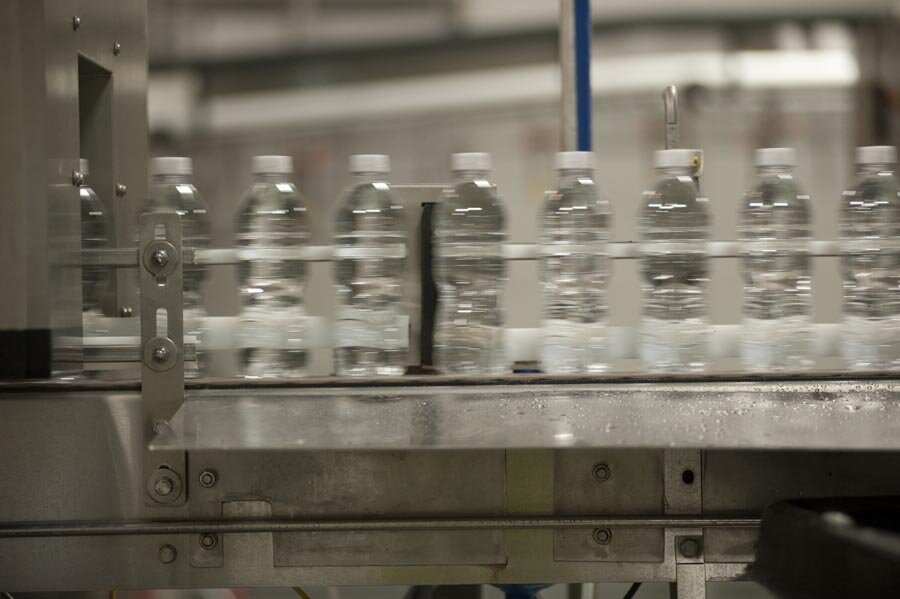Is Nestlé allowed to take water from parched California?
Loading...
Tuesday, the US Forest Service came under scrutiny as a lawsuit claims the agency has allowed Nestlé Waters to operate with an expired permit in California, even as the state faces a severe drought.
A lawsuit filed by environmental groups seeks to put a hold on Nestlé’s operations in the San Bernardino National Forest, but might have farther reaching consequences. Nestlé Waters owns the Arrowhead bottled water brand and has a permit to harvest water that expired in 1988. The company takes between 50 and 150 million gallons of water annually, The Guardian reported.
The lawsuit – filed by advocacy groups including the Story of Stuff Project, the Center for Biological Diversity, and the Courage Campaign Institute – is not naming Nestlé Waters as a defendant. Instead, the lawsuit targets Regional Forester Randy Moore and San Bernardino National Forest Supervisor Jody Noiron. Under the current permit protocol, Nestlé Waters’s expired permit is still in effect.
“We adhere to all local, state and federal regulations regarding our operations, all of which are in good standing, including our permit,” Tim Brown, CEO of Nestlé Waters North America wrote in an op-ed for the Sun.“ “Like several hundred other special permit holders in the San Bernardino National Forest… whose permit is under review, our permit remains valid and, according to federal law, 'does not expire until the application has been finally determined by the agency.'”
The US Forest Department has a backlog of nearly 2,500 expired special use permits, according to The Lost Angeles Times. Roughly 1,200 of those involve water and are still waiting for a formal review. In the meantime, those permits, Nestlé Waters's included, allow continued operations as long as companies adhere to regulations and pay fees. For their operations in the San Bernardino National Forest, the agency collects $542 annually from Nestlé Waters.
“Modern scrutiny would never let this kind of stuff happen,” said Eddie Kurtz, executive director of the Courage Campaign Institute, one of the co-plaintiffs in the suit. “… There are a lot of permits like these all over the country.”
Nestlé Waters’s use of California public water for its bottled water brand, Arrowhead, has come under increased scrutiny in recent months. California's current drought is so bad that the state has been in a State of Emergency since January 2014. Governor Jerry Brown of California has requested all cities reduce water use by 25 percent.
Nestlé has said that it too is reducing water use, saying it uses less than .008 percent of California’s water supply. According to the Los Angeles Times, Nestlé has five bottled water plants in California. Those plants take in roughly 705 million gallons of water annually.
“The Forest Service has acknowledged that this is not proper, and has promised several times over the years to address the problem, but so far has done nothing,” said Rachel Doughty – an attorney for Story of Stuff and the Courage Campaign Institute on the lawsuit – to The Guardian.








